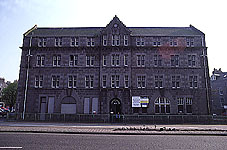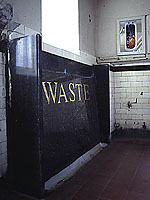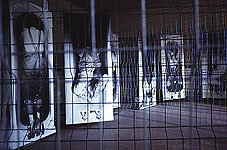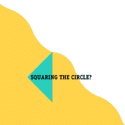

| page 8 of 14
|
 |
|
(NEARLY!) SQUARING THE CIRCLE
|
|
| As we realised at the beginning of the lecture, attempting to square the circle is impossible, but that is not its real value. Its worth lies in the identification of challenges, the raising of questions, attempting to solve problems and in doing so discovering things which are a result of persistent trying to reconcile different practices. As I am still trying this is not a conclusion, but an attempt to make a more rounded square! | |
 |
How can an artist best engage with education, and vice versa? Klee's exasperating, but completely true, quote "no good artist should teach, and no one should teach who is not a good artist" sums up the dilemma facing practitioners. The desire to share experiences and products of practice is a strong one, and can be extremely rewarding for both practitioner and student. Most of us teach in order to not just sustain our practices, but to allow some innovative development, in the context of a professional peer group, for example, in my case the Artesign research group. The benefits of this involvement may far outweigh an isolated form of practice, although many artists operate in this way very productively. |
|
New developments in professional practice can be fedback directly to students through
teaching, and also be used for curriculum development. |
|
 photos: Susannah Silver |
For instance, the emergence of new kinds of contexts for showing work, which are not gallery based - as in the Kinesis group exhibition at the Old Model Lodging House in Aberdeen. |
 'The Lodging House Project', Aberdeen 1993 |
This is Susannah Silver's installation "Waste" - you might recognise the person in the bath as me! |
 'The Lodging House Project', Aberdeen 1993 |
| Such projects raise issues about the range of roles an artist might adopt - project initiator, organiser, collaborator, fund raiser, social commentator, not least exhibitor. This crucial connection with the profession achieved through practice ensures that students are exposed to a range of examples of "versatile and resourceful practitioners" with a diversity of teaching styles to complement a diversity of learning styles. | ||
|
To get the best out of this relationship educational institutions need to realise that, if
teaching and learning is to benefit from cutting edge developments in practice,
practitioners need to be given the opportunity and freedom to apply these ideas. The revolution in British art education in the 1950s was led by artists like Richard Hamilton, Victor Pasmore and Tom Hudson ('A Continuing Process', Thistlewood, 1981), just as that earlier pedagogic innovation at the Bauhaus was led by Gropius, Kandinsky, Schlemmer, Albers and Klee. Change was initiated by the discipline and implemented by professional practitioners. Our discipline's main contribution to teaching and learning is in its application of experiential inductive learning - learning by doing, learning through practice - which encourages deep learning as opposed to surface learning through extrinsic motivations.The constant factor in the pedagogic work of Pasmore, Hamilton and Hudson was a resolution of opposites - the combination of intellectual and intuitive faculties within a fresh approach to creativity - which Hudson termed "combine - construct". They were trying to square the circle. It is pleasing to see that what may have seemed maverick in the 50's, and mainstream in art and design education over the last 40 years, is now being advocated and applied in many other disciplines. |
 previous page previous page |
 next page next page |